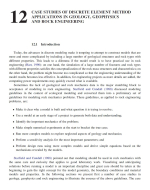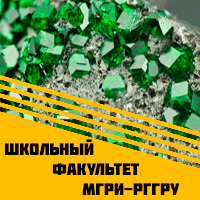Добрый день, Коллеги. Важное сообщение, просьба принять участие. Музей Ферсмана ищет помощь для реставрационных работ в помещении. Подробности по ссылке
Case studies of discrete element method applications in geology, geophysics and rock engineering / Тематические исследования применения метода дискретных элементов в геологии, геофизике и горной инженерии
Today, the advances in discrete modeling make it tempting to attempt to construct models that are more and more complicated by including a large number of geological structures and rock types with different properties. This leads to a dilemma if the model result is to have practical use in rock engineering (Hart, 1990): on one hand, the simulation of a large number of fractures and rock types with different properties satisfies the conceptualization of the rock mass structures and characteristics; on the other hand, the problem might become too complicated so that the engineering understanding of the model results becomes less effective. In addition, for engineering projects as more details are added, the computing power requirements may quickly exceed what is available.
Sometimes the lack of geological and rock mechanics data is the major stumbling block to acceptance of modeling in rock engineering. Starfield and Cundall (1988) discussed modeling guidelines in the context of ecological modeling and converted them into a preliminary set of guidelines for modeling rock mechanics problems. These guidelines, as applied to rock engineering problems, are:
l Make it clear why a model is built and what question it is trying to resolve;
l Use a model at an early stage of a project to generate both data and understanding;
l Identify the important mechanics of the problem;
l Make simple numerical experiments at the start to bracket the true case;
l Run more complex models to explore neglected aspects of geology and mechanics;
l Perform a sensitivity analysis for the most important parameters; and
l Perform design runs using more complex models and derive simple equations based on the mechanisms revealed by the models. <...>




